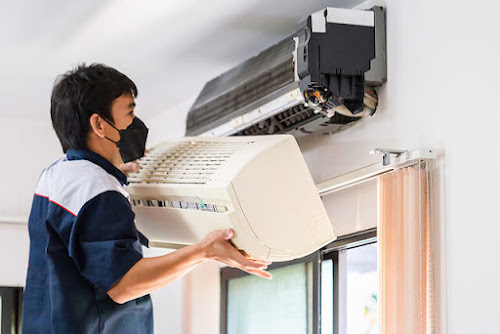The Top Heater Installation Mistakes to Avoid: Lessons Learned from the Pros
Installing a heating system in your home can be a complex process. Whether you're replacing an old heater or installing a brand new one, it's important to avoid common installation mistakes to ensure your heater is safe, efficient, and long-lasting. In this article, we'll discuss the top heater installation mistakes to avoid, and share some tips and lessons learned from the pros.
1. Introduction
Installing a heater can be a significant investment, so you
want to make sure that it's installed correctly. Even the smallest mistake
during installation can result in a dangerous, inefficient, or costly system.
To help you avoid these issues, we've compiled a list of the top heater
installation mistakes to avoid.
2. Choosing the wrong
size heater
One of the biggest mistakes people make when installing a
heater is choosing the wrong size. A heater that is too small for your home
won't be able to keep up with the demand for heat, while a heater that is too
large will waste energy and cost more money to operate. To determine the right
size, you'll need to calculate the square footage of your home, consider the
climate in your area, and evaluate your insulation.
3. Installing the
heater in the wrong location
Another common mistake is installing the heater in the wrong
location. A heater that is placed in an area that is too small or poorly
ventilated can lead to dangerous carbon monoxide buildup. On the other hand, a
heater that is installed in a large, drafty area can result in inefficient
heating.
4. Failing to
properly vent the heater
Proper ventilation is essential for any heating installation in Melbourne.
Without it, dangerous gases can build up in your home. Make sure that your
heater is installed with the correct venting system that meets all local codes
and regulations. If you're unsure about the right type of venting, consult with
a professional installer.
5. Improperly
connecting the heater to the gas line
Improper gas line connections can be hazardous and cause gas
leaks, which can lead to fires or explosions. A licensed technician should
connect the heater to the gas line and ensure that all connections are tight
and secure.
6. Neglecting
electrical requirements
Most heaters require electricity to operate. Neglecting the
electrical requirements of your heater can result in damage to the unit or even
a fire. Ensure that your heater is connected to the right voltage, and use the
appropriate wiring for your specific heater model.
7. Not sealing air
leaks
A poorly sealed home can result in significant heat loss,
causing your heater to work harder and costing you more money. Properly sealing
air leaks can save energy and reduce heating costs. Make sure that all gaps and
cracks around windows, doors, and walls are sealed.
8. Skipping the
annual maintenance
Regular maintenance is crucial to ensure your heater
operates at peak efficiency and prolong its lifespan. Skipping annual
maintenance can lead to costly repairs, energy waste, and even dangerous
situations. Hire a professional to perform routine maintenance and inspections.
9. Not obtaining
necessary permits
Heater installations often require permits from local
authorities. Failing to obtain these permits can result in fines and legal
issues. Ensure that you have all necessary permits before starting the
installation process.
10. Failing to test
the heater
After installation, it's essential to test the heater to
ensure that it's operating correctly. Testing includes checking the thermostat,
carbon monoxide levels, and ensuring that the air filter is clean. Skipping
this step can lead to dangerous or inefficient heating.
11. Ignoring safety guidelines
Ignoring safety guidelines during heater installation can
result in hazardous situations. Follow all safety guidelines provided by the
manufacturer and your installer to ensure your heater is safe to operate.
12. Conclusion
Installing a heater can be a complex process, but avoiding
these common mistakes can help ensure a safe, efficient, and long-lasting
system. Remember to choose the right size heater, install it in the right
location, properly vent it, connect it to the gas line correctly, meet
electrical requirements, seal air leaks, perform annual maintenance, choose the
right installation company, obtain necessary permits, test the heater, and
follow safety guidelines.
13. FAQs
How can I determine
the right size heater for my home?
You can calculate the square footage of your home, consider
the climate in your area, and evaluate your insulation to determine the right
size heater for your home.
Can I install a
heater in any location in my home?
No, you should avoid installing a heater in a small or
poorly ventilated area that can result in carbon monoxide buildup. It's
essential to choose the right location for your heater installation.
Why is proper
ventilation important for heater installation?
Proper ventilation is crucial for any heater installation.
Without it, dangerous gases can build up in your home, which can lead to
dangerous situations.
Do I need to obtain
permits for heater installation?
Yes, in most cases, heater installations require permits
from local authorities. Failing to obtain these permits can result in fines and
legal issues.



Comments
Post a Comment